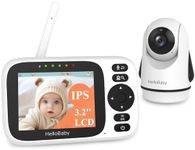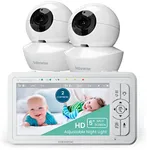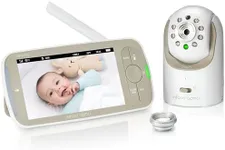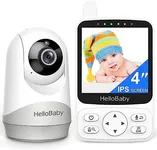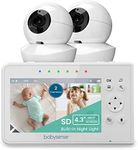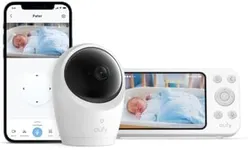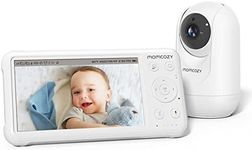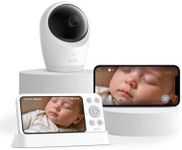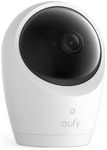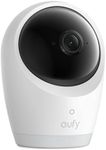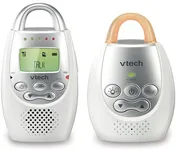Buying Guide for the Best Audio Baby Monitor
Choosing the right audio baby monitor is all about matching the features to your family's needs and your home's layout. Audio baby monitors help you keep an ear on your baby from another room, providing peace of mind and allowing you to move around freely. When shopping for one, it's important to consider how you'll use it, the size of your home, and any specific concerns you might have, such as interference or battery life. Understanding the key specifications will help you make a confident and informed choice.RangeRange refers to the maximum distance over which the baby monitor can transmit sound from the baby's room to the parent unit. This is important because it determines how far you can move away from your baby's room while still being able to hear them. Monitors with a shorter range (up to 300 feet) are suitable for small apartments or homes, while those with a longer range (up to 1000 feet or more) are better for larger houses or if you plan to be outside in the yard. To pick the right range, think about the size of your home and where you’ll be spending most of your time while your baby sleeps.
Sound QualitySound quality describes how clearly you can hear your baby through the monitor. Good sound quality is important so you can distinguish between different types of noises, like crying or cooing. Some monitors offer basic sound, while others have enhanced clarity or noise reduction features to filter out background noise. If you want to hear every little sound, look for monitors with high sound clarity. If you just need to know when your baby is crying loudly, basic sound quality may be enough.
Battery LifeBattery life tells you how long the parent unit can operate before needing to be recharged or have its batteries replaced. This is important if you plan to carry the monitor around the house or use it overnight. Some monitors last only a few hours, while others can go all day or night on a single charge. If you need to use the monitor for long periods without plugging it in, look for one with longer battery life. If you’ll mostly keep it plugged in, battery life may be less important.
Interference and SecurityInterference refers to unwanted noise or signals from other electronic devices, while security is about keeping your audio feed private. Some monitors use basic analog signals, which can pick up interference from cordless phones or Wi-Fi devices, and may be less secure. Others use digital or DECT technology, which reduces interference and makes it harder for others to listen in. If you live in an area with lots of electronic devices or are concerned about privacy, choose a monitor with digital or DECT technology.
Two-Way CommunicationTwo-way communication, sometimes called talk-back, allows you to speak to your baby through the monitor. This can be helpful for soothing your baby with your voice without entering the room. Some monitors only let you listen, while others let you talk back. If you think you’ll want to comfort your baby remotely or communicate with another caregiver in the baby’s room, look for a monitor with this feature.
PortabilityPortability refers to how easy it is to move the parent unit around with you. Some monitors are compact and lightweight, with belt clips or lanyards, making them easy to carry. Others are bulkier and meant to stay in one place. If you want to move freely around your home or yard, choose a portable monitor. If you’ll mostly keep it on a nightstand, portability may not be as important.
Additional FeaturesSome audio baby monitors come with extra features like night lights, lullabies, temperature sensors, or sound level indicators (lights that show noise levels). These can add convenience or peace of mind, but aren’t essential for everyone. Think about which extras would actually be useful for your routine, and focus on those when comparing models.
